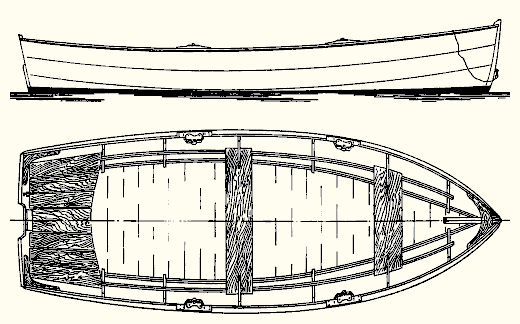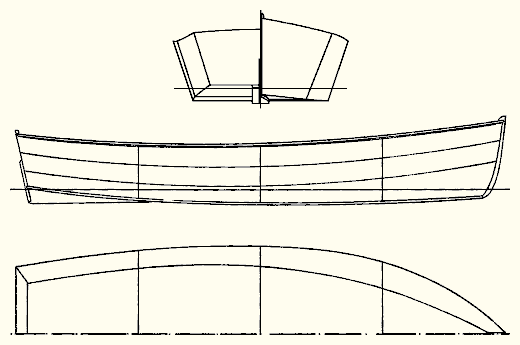

MOST boating people rightfully think of a flat-bottomed boat as a poor example of the boat designer's and builders art. And judging from the far too many boats of this kind that crowd the yacht club floats, rental moorings and waterways this is hardly to be wondered at. Like my old friend, naval architect Frederick K. Lord, I marvel how anyone can manage to conceive and build such ugly and inadequate boats.
A flat-bottomed boat of any size can be an excellent boat; but there should be something more than a little experience in designing one. Also it is necessary the designer should have also more than a little experience in the personal use of many boats of this simple kind. He should have rowed them, built them, overhauled them, sailed them, fished from them, clammed from them, and raced in them. Theory and mathematics are ineffective for the production of a really well behaved flat bottomed skiff. Rather it requires step by step development and a pleasant study of the subject of skiffs coupled with many years of experience as a background from which to work.

There are many kinds of skiffs. Those designed only for rowing, of necessity, must be of somewhat different form than those designed exclusively for use with outboard power. On the other hand, boats of this class designed for inboard power present another problem and if the skiff will he used in rough water, then other characteristics must be considered. A skiff used as a tender for a cruising boat is still another matter. The same may be said if the skiff will be used for fishing, carrying loads or for livery purposes. I always think of a skiff as a pointed bowed boat having a square stern and a flat bottom. Variations from a true skiff are prefixed by terms like: St. Lawrence, Seabright, double-end, Seaford, Jersey, and other limiting designations.

The over-all length is exactly 12 feet; the waterline length is 10 feet 11 inches; the breadth to outside of planking is 4 feet 4 inches; and the draft is 4 1/2 inches. The sheer height at the bow is 20 3/4 inches, the least height, 14 inches, and the height at the stern, not including the crown, is 16 1/2 inches. The depth from the sheer line at station 3 to the inside of the bottom planking is 15 3/4 inches. Thus with generous depth, freeboard and breadth, Jebb will carry a heavy live-load, be difficult to capsize, and thanks to the buoyant white cedar planking, thwarts, and other parts cannot sink. Can one ask much more of a boat?